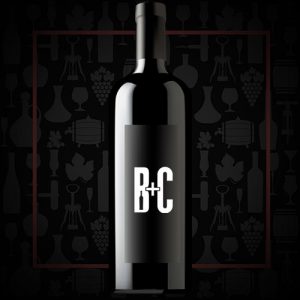Cellar Profile
The Bertolino family’s origins are in the village of Castelnuovo Calcea, in the Asti district of Piemonte. There, more than a century ago, the family began their venture in both winemaking and the wine trade. In the 1920s, the family moved to the neighbouring commune of Nizza Monferrato and the first Bertolino license to sell wine was dated there, on June 18th, 1927. In 1961, the family bought the villa Bauda at Incisa Scapaccino. They created the “Tenuta Olim Bauda” that soon became famous for Freisa, Moscato and, above all, Barbera. Following the tragic death of Bertolino Sr. in 1985, the family was forced to close the winery and sell their prized fruit to other producers in the area. In 2000, the family decided to re-establish the winery and its winemaking traditions. Today, the estate is owned and operated by the three Bertolino siblings: Dino, Diana and Gianni. Their wines are at once modern and classic, loaded with fruit, intensity and brawn and backed by elegance, structure and refinement.
Region
An outstanding high-quality wine region in northwest Italy, widely considered the country’s most stable and evolved viticultural area. Its temperature and rainfall mirror Bordeaux. The vast majority of Piedmont’s terrain is mountainous or hilly, creating optimum elevated vineyard sites for the region’s best varieties. Of those, Nebbiolo enjoys the greatest notoriety and acclaim. The grape reaches its highest potential in the sub-regions of Barolo and Barbaresco where it is made into incredibly structured, complex, and ageworthy wines. Approximately half of Piedmont’s vineyards are planted with Barbera. The past thirty years have seen significant improvement in Barbera-based wines, with some commanding price levels that approach those of Barolo and Barbaresco. Prior to 1980, white wines were, for the most part, an afterthought, but they are now gaining acclaim and popularity in Italy and abroad. Of particular interest is the resurgence of Gavi, made from the Cortese grape, and the low-alcohol, frizzante Moscato d’Asti.
Vineyard
The Bertolino family’s vineyard plantings date to 1979 and 2000. They are located in the warmest sub-zone within Nizza Monferrato and one of the warmest in all of Asti. Soils consist predominantly of clay and sandy marl with a fair amount of lime with chalky ‘veins’ throughout. Le Rocchette is sourced from a single vineyard that possesses more sand than the others. Grapes are Guyot-trained and tended to by hand.
Varieties
Barbera is a red Italian wine grape variety that produces good yields and is known for deep colour, full body, low tannins and high levels of acid. When young, the wines offer a very intense aroma of fresh red cherries and blackberries. In the lightest versions, notes of cherries, raspberries and blueberries; and with notes of blackberry and black cherries in wines made of more ripe grapes. Many producers employ the use of toasted oak barrels, which provides for increased complexity and aging potential. The lightest versions are generally known for flavours and aromas of fresh and dried fruit.
Winemaking
Hand-harvested fruit, from selected vines known for giving wines of complexity. After hand sorting and de-stemming, the wines are crushed into stainless steel for fermentation using indigenous yeasts. Upon completion of malolactic fermentation, the wine is transferred into Allier barriques for 18 months of aging before spending another year in bottle before release.
Tasting Notes
The sandy soils of this site give this blockbuster Barbera tons of primary fruit character. Black cherry, ripe raspberry, pomegranate and cocoa on the nose. On the palate, this is one of the heftier Barbera you will find; big-bodied and structured, but approachable now. The tannins are fairly firm, but integrated. A hearty roast beef dinner or winter stew would work amazingly with those tannins.

 info@buyersandcellars.ca
www.buyersandcellars.ca
info@buyersandcellars.ca
www.buyersandcellars.ca